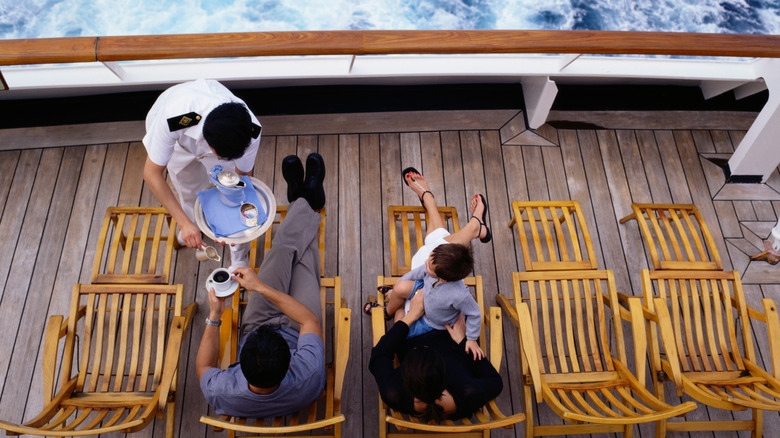From small ships and river cruises to floating resort megaships, there is a cruise to suit almost every taste, budget, and age group. Sometimes, though, you, or specifically your kids, don’t match the demographic of the cruise you have booked. It can happen for many reasons. You may find the timing and itinerary of the cruise are exactly what you want, even if the cruise line isn’t. It may be you are taking a multi-generational trip that is weighted more toward the older generations or are traveling with a group that’s mainly adults. You might be feeling some trepidation about the venture. Can you even bring your kid on an adult-focused ship?
The answer is yes! We’re here to tell you that it can even be an enjoyable adventure. Giving your kids the opportunity to show off their best can be gratifying for both of you. Watching them use the tools you’ve worked on supplying them with will fill you with pride. It is a gift to put them in an unfamiliar situation and watch them rise to occasion. Based on our own experiences and in-depth research, we’ve compiled a guide on how to survive an adult-focused or luxury cruise with your children.
Prepare yourself

There is a difference between no kids allowed and adult-centric. For instance, neither Viking nor Virgin Voyages permit anyone under 18 to sail with them. Other brands, for example, the high-end Seabourn, Windstar, and Azamara cruise lines aren’t explicitly adults-only but lack (or have limited) options for young people. Sometimes, certain itineraries are more family-friendly, usually those during the summer and school holidays. English line P&O has two ships that are adults-only and five that are all-ages. So the first step is determining if you can even bring your kids on your desired trip.
Secondly, research any limitations for the age group of your children. Many cruise lines don’t accept infants under six months old. Children under one year of age are generally not allowed on transatlantic or transpacific cruises. Some excursions won’t be suitable for young kids. Ask your travel agent or contact the cruise help center to ask about minors’ access to evening shows and lounges, if swim diapers are allowed in the pool (likely your not potty-trained kiddo will need to stay out of the water), and if there are restrictions on being left alone at the kids club or unaccompanied minors going ashore. You may not be able to have your kids stay in a balcony suite without an adult, a consideration if you want to book adjoining rooms rather than share a cabin.
Once you’ve booked your cruise, it’s time to prepare the kids.
Get your kids ready for the cruise
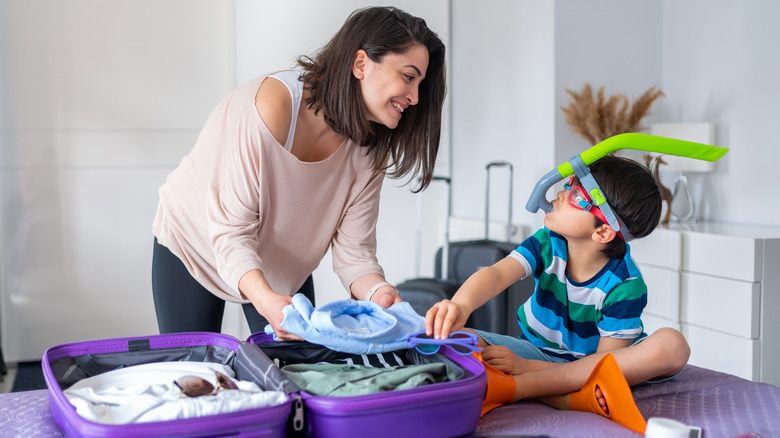
You need to prepare your kids for the type of trip you’ll be taking. They may have heard about cruise vacations from friends or seen splashy ads for resort-type cruise lines. If they are expecting waterslides and character dining but you have booked on an expedition adventure, you’ll need to manage expectations. Start well ahead of time and get them excited by sharing YouTube ship tour videos and information from the cruise line website. Look for books about the destinations you’ll be visiting to build anticipation.
You’ll also want to set out your expectations. Explain the rules ahead of time so there are no surprises when your family is shipside. Safety is priority number one. Let your kids know they won’t be allowed on the balcony without an adult, for example. Decide on guidelines for the pool. You’ll also want to make sure you are all on the same page regarding acceptable behavior. Ensure your kids know running in the halls is off-limits and loud voices are reserved for in the kids’ club or outside. Don’t go too heavy on rules though, the idea is still a fun vacation for everyone.
Practice good manners at home

Studio Romantic/Shutterstock
The atmosphere on higher-end ships is similar to fancy hotels in a lot of ways, particularly when it comes to appropriate behavior and manners. There’s a very good chance that supper in a ship’s dining room is more formal than your average family dinner. Get your kids comfortable with proper table etiquette by practicing at home. We’re going to assume they’ve got the basics of “please pass the salt” and thanking the server down already, but what about the difference between a soup spoon (large and on the right side of the plate) and a dessert spoon (small and above the plate)? Does your child know how to butter a bun (rip it into bite-sized pieces and butter them individually) or where to put their knife and fork when they are done (parallel to each other along the 12 and 6 o’clock axis)? Create opportunities at home to practice so it’s not so weird to them when you are having a fancy dinner for real.
The service is unerringly polite on cruises and your kids need to know how to respond in an equally polite way. They may be addressed as “Miss” or “Master” or by their name which can be confusing if you haven’t given them a heads-up. Especially if your kids are a bit shy, you’ll want to equip them with a lot of advance notice. It’s a good chance for you to bone up on etiquette too.
Try to connect with other parents
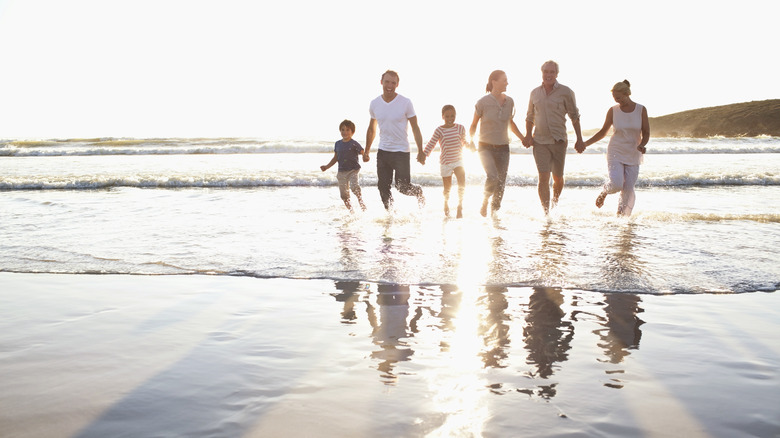
Ojo Images/Getty Images
The Cruise Critic website is a great place to conduct some pre-cruise research. One of the resources you may want to check out is its roll call forums. These are organized by ship and itinerary, which gives you a chance to virtually meet some of the folks you’ll be traveling with. It’s a convenient way to connect with other parents. Keep in mind that even though you have to register to view and comment, it is a public board, so keep details about your children at a minimum for privacy. It’s possible not everyone is going to be thrilled at the prospect of kids on an adult-focused cruise but if you present yourself as someone who is looking to make the trip the best possible for your family and your fellow cruisers, it will garner some goodwill.
If you can’t connect with other parents before the cruise, you can seek them out onboard. Even cruises that are mainly for adults will often have at least a room designated as the kids club (although it may only be open in the summer and school holidays). Go there on your embarkation day to get your kids registered and take the time to chat with the other parents. Knowing you aren’t alone as a parent on an adult-focused cruise will be encouraging, plus they may have some tips to help make the cruise smoother.
Pack smart
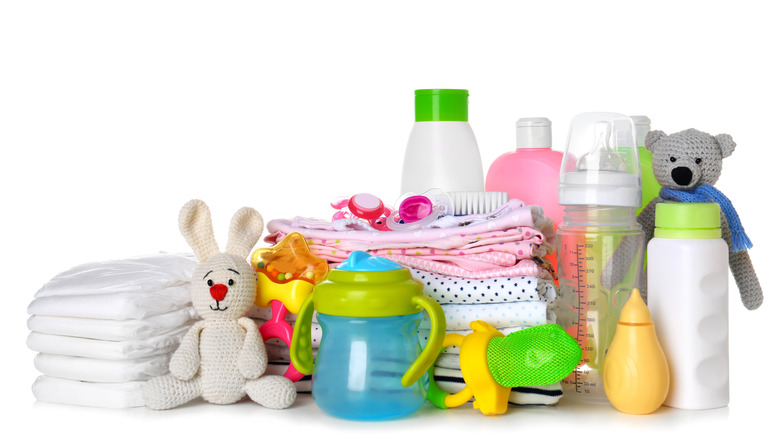
New Africa/Shutterstock
A cruise is not the time to pack light. The fact you only need to unpack once the whole trip means you can be somewhat generous with what you bring. If you are taking your kids on a mainly adult cruise, what you bring is going to take a little extra planning. On a kid-focused cruise, the shops on the ship may carry a few children essentials. On an adult cruise, don’t count on it. You may be able to restock when you are in port, but stores near cruise terminals are usually good places to pick up souvenirs, not baby formula. So, start listing what you’ll need and then pack extra.
To get your list started, we have a few suggestions: kids’ painkiller and motion sickness tablets; a stroller or collapsible wagon for carting bigger kids and their stuff; an inflatable tub for kids who can’t do showers yet — a tub in a stateroom is rare; a car seat for use in port; quiet activities such as coloring books with mess-free markers and Play-Doh. A cruise with lots of grown-ups is a good time to relax screen-time restrictions for your kids. A tablet with some games and movies downloaded or an e-reader can be a great distraction for antsy kids. Wi-Fi can be expensive at sea, so unless you are planning to shell out for internet access, make sure nothing requires connectivity. And, don’t forget the headphones.
Get input on activities

Volodymyr TVERDOKHLIB/Shutterstock
Each day, you’ll receive a line-up of what’s happening on the ship. Let your kids peruse it and pick a few things. They might want to watch the towel-folding demonstrations or sit in on the art auction. It might surprise you what they are interested in. On a ship that has a waterpark, a behind-the-scenes kitchen tour or cooking demonstration might not hold enough allure to tempt your kids, but on a ship with adult-oriented activities, it might be exactly the thing to awaken their inner chef.
If the shipside activities are going to be fairly adult-centric, you may want to keep the excursions very kid-friendly, for balance. A line like Princess, (which is a line that is welcoming to kids without being kid-focused) has a lot of excursion options, some that won’t be appropriate for kids, some that would be fine, and a few that they earmark as family-friendly. If your cruise line has similar, you may want to opt for them. If the cruise line excursions don’t hold any appeal, you may want to look at booking a private shore excursion. Be warned though, if you opt for an excursion that isn’t through the cruise line, you won’t have the same protections if you are late.
You also don’t have to book an excursion at all. Finding a park to run around in or a beach to flake out on can be the best way to spend your port day with kids.
Tackling formal nights with kids
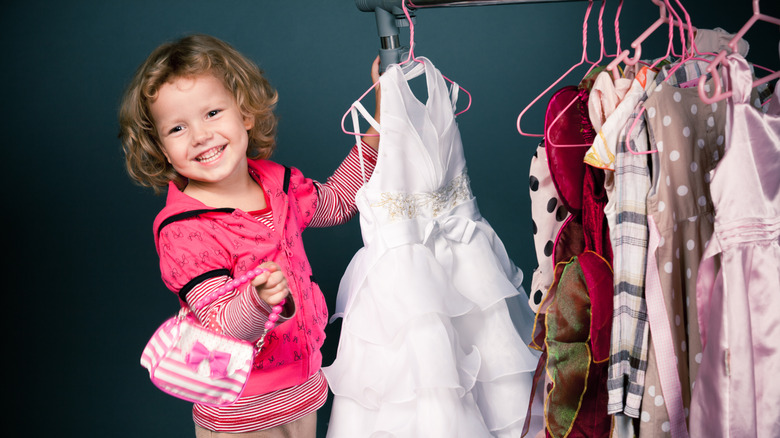
Laoshi/Getty Images
Formal nights on cruises are one of the things that cruise fans love. Having the chance to wear a gown or tuxedo and indulge in an upscale meal is a rare occurrence for most people. It’s fun to splash out for adults. Kids, on the other hand, might find it a bit of a drag. Remember, unless you are on a small ship with only one dining option, you don’t have to participate in all the formal nights, or any of them. If you choose to go formal, Cruzely says that formal wear is flexible as long as you attempt to dress nice.
If things take a turn with the kids, or you suspect they might, ask your server to bring starters and the entrees together, to speed things up. If you need to leave, you may be able to have your food brought to your stateroom to finish there.
If you decide to opt-out, there are always lots of options. The upscale restaurants will have formal nights the same night as the dining room, but the casual restaurants won’t have a dress code in effect. It might be a good evening to enjoy a room service dinner, or on lines like Princess, with their “OceanNow” dining, you can eat almost anywhere on the ship. Poolside burgers, perhaps?
Give kids some freedom
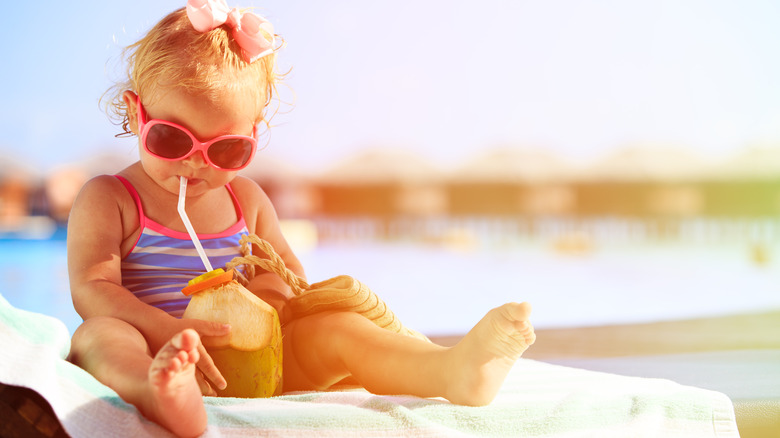
Nadezhda1906/Getty Images
If you are traveling with a teen or tween, it’s nice to give them a bit of freedom. It may take a day or two to get yourselves oriented, but once you have the lay of the land (ahem, ship), it’s hard to get too lost, and there are always friendly staff around to point kids in the right direction. Princess Medallions are AirTag-sized pendants that serve as a key to your stateroom and a tracker, so you can easily see where on the ship your kids are, even creating the most direct route from you to them. MSC and Disney have similar technologies through phone apps. You may want to put a little bit of money in a shipboard account they can access, if they want a little treat or souvenir.
Investigate whether buying the soft drinks package makes sense for your family. Some kids will be entertained almost endlessly by the autonomy granted by simply being able to go up to the bar to order a virgin piña colada. As an added bonus, some lines package drinks and Wi-Fi in a bundle, which can mean savings over buying them separately.
Create onboard opportunities for silliness

Evgeny Atamanenko/Shutterstock
Being on best behavior without a break can be exhausting for kids and policing it can be exhausting for even the most patient of parents. Make sure you have time every day for kids to get their sillies out — this applies to big kids too. If everyone knows there is going to be time to be active and a little bonkers, it can make the more restrained times easier. Try to find times when things aren’t too busy, so you all can let loose with minimal disruption to other passengers. Look for open time on the sports court to shoot hoops or try your hand at pickleball. Find off-peak times on the running track (for example, during supper time) to have goofy foot races. There is almost always a ping-pong table on a cruise ship that is up for grabs.
You can also play in your cabin. It’s tight, but there are spots for hide and seek. The Active for Life has some fun alternatives: Sardines, Hide and Seek Jail, and Home Base. You could also shut off the lights and do a “blind” version — especially effective if you have an inside cabin.
Make it up to them at port

Sunny studio/Shutterstock
You will try to make the cruise an amazing time for you and for them. The chances are that bringing your kids on an adult-focused cruise is going to be a hoot for all of you. But if you need to sweeten the deal, consider adding a few days in your disembarkation port that is all about kids. We all know not arriving the day before embarkation is one of the biggest cruise mistakes you can make (you want to give yourself a cushion in case of delays) but have you thought about how nice it would be to have some time to stretch out the fun before heading home?
Get your kids involved in planning what you will do on a whirlwind tour once they are off the ship: exploring pirate history in Galveston, a drive up the Space Coast in Florida, a visit to Universal Studios in Los Angeles? Not only will it be a fun release after needing to exercise adult behavior during the week, but it will also be a good “carrot” to encourage them if it gets tough on the ship.

